
Ocellaris Clownfish and Anemone Stock Photo Image of blue, clown
The most common variety of Ocellaris Clownfish is mainly an orange fish with three bold white stripes, the center stripe generally bulging toward the head of the fish. The white stripes are outlined by black stripes, generally thin in the Ocellaris (thicker in the Amphiprion percula or True Percula Clownfish).

Group of Ocellaris Clownfish Nestled in a Magnificent Sea Anemone Stock
Family group of Ocellaris clowns in an anemone. Fortunately for those of us who enjoy keeping Ocellaris clownfish, they are quite easy to keep healthy and happy in a well maintained aquarium. In captivity, False Percula Clownfish can live for over a decade and will grow to almost become part of the family.
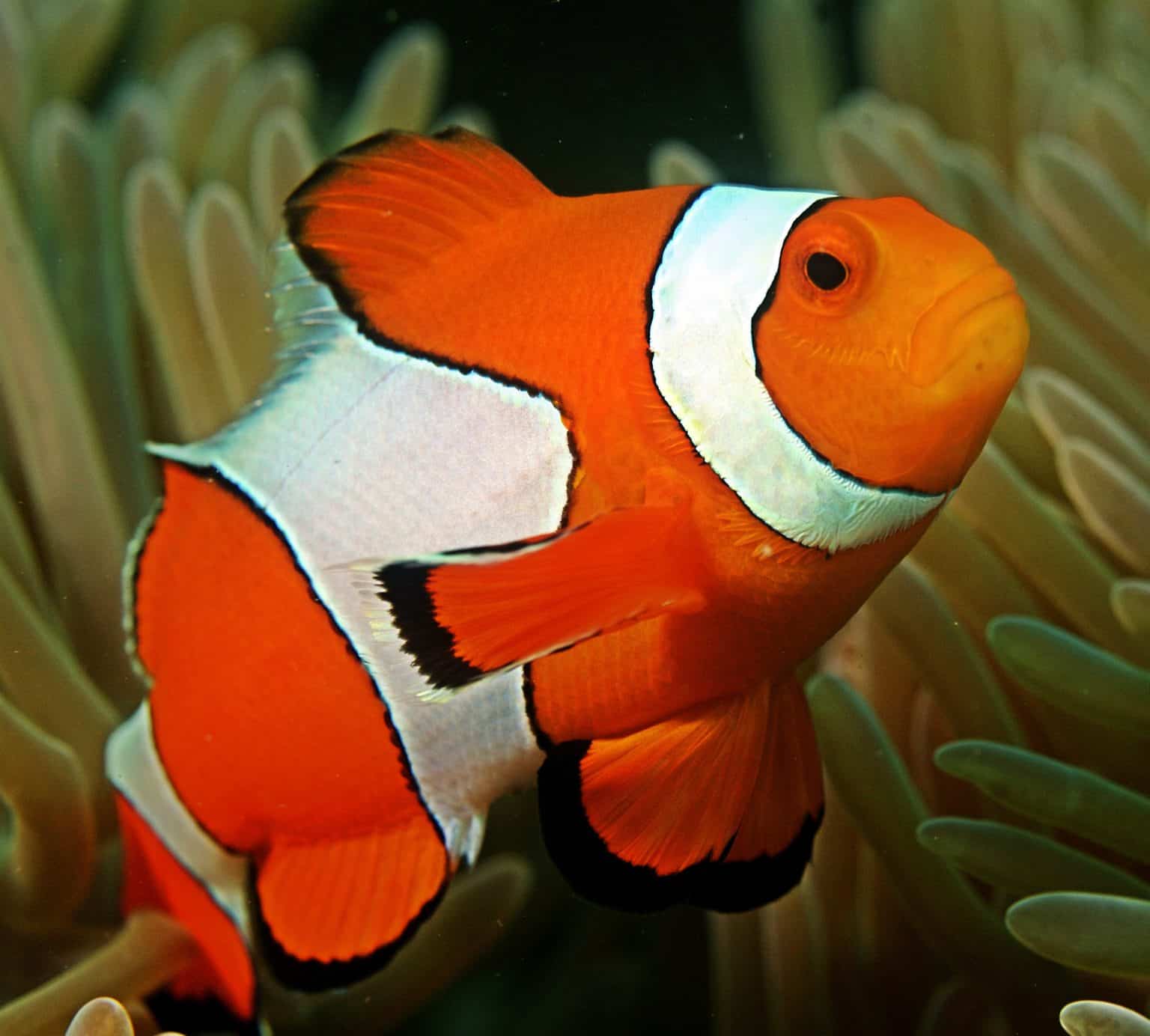
Ocellaris Percula Clownfish Mi Arrecife
Best type of Anemone for Clownfish to host? MRMarineMan Jan 19, 2019 None Jan 19, 2019 #1 M MRMarineMan New Member Joined May 20, 2018 Messages 16 Reaction score 13 Rating - 0% 0 0 0 Hi all, I'm soon going to be starting a saltwater tank and were wondering what type of Anemone / coral would be best for clownfish to host.
:max_bytes(150000):strip_icc()/clownfish_sea_anemone-581b994d3df78cc2e879cc71.jpg)
Mutualism Symbiotic Relationships
common clown fish, ( Amphiprion ocellaris ), species of anemone fish best known for its striking orange and white coloration and its mutualism with certain species of sea anemones.

Ocellaris Clownfish (Care Guide) YouTube
Clownfish Anemone Compatibility Chart Updated August 12, 2019 Author: Mike - FishLore Admin Social Media: The Clownfish Anemone Compatibility Chart on this page lists some of the various anemone species along with compatible clownfish species that they can form a symbiotic relationship with.
Ocellaris Clownfish Project Noah
Amphiprion ocellaris. Maximum Size: 4" (10 cm) Tweet. Description. The Ocellaris Clownfish is the most familiar species of clownfish and was made famous in the Disney movie "Finding Nemo". It is bright orange with three white stripes. All white stripes are outlined with a narrow black edging and the fins typically have a thicker black edging.

Clown Anemonefish (amphiprion Ocellaris) Photograph by Steven Trainoff
Ocellaris Clownfish can be found at a depth of 49 ft (15m) and are key inhabitants of coral reefs. Ocellaris clownfish are essential to sustaining coral reefs, more specifically, Sea anemones. The sea Anemone and Ocellaris Clownfish both benefit from their symbiotic relationship; the Anemone provides the Clownfish with protection and shelter.

Ocellaris Clownfish Fish Laboratory
The Ocellaris Clownfish is known for an up-and-down swimming motion that is interesting to watch. This species also has a habit of taking up residence inside sea anemones. Author Note: Don't assume that Ocellaris Clownfish are taking advantage of these invertebrates!
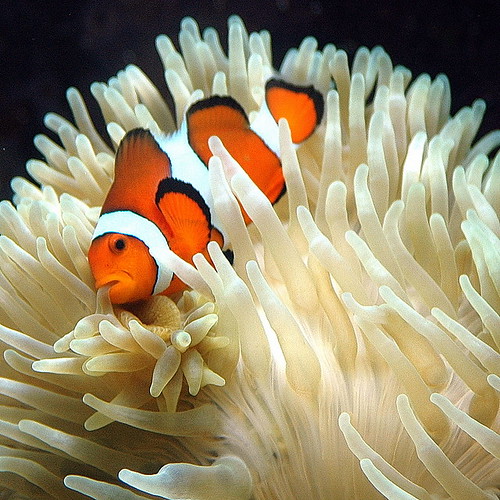
Ocellaris Clownfish & Bubble Tip Anemone Andy Young Flickr
Ocellaris Clownfish are one of the smaller clownfish species, reaching full maturity at 3 inches. They are slightly larger than the Percula Clownfish, which only reaches 2.5 inches but much smaller than Maroon Clownfish and other large species. Sexing Ocellaris Clownfish
My Ocellaris clown in his favorite anemone Aquariums
Aquarium care Minimum tank size Are they reef safe? Water chemistry Feeding Compatibility with host anemone species Compatibility with other saltwater fish Breeding Designer Ocellaris Clownfish Types References Quick Facts About the Common Clownfish: Scientific Name: Amphiprion ocellaris
.jpg)
FileClownfish (Amphiprion ocellaris).jpg Wikipedia
Species - ocellaris Common Names The clown anemonefish is referred to as an anemonefish due to its symbiotic relationship with sea anemones. Other English language common names include common clownfish, false-clown anemonefish, nemo, and western clownfish.
Ocellaris Clownfish with Magnificent Sea Anemone Project Noah
Breeding Ocellaris clownfish. Common name: Ocellaris clownfish, Anemone Fish, Orange Anemone Fish, Nemo, False percula clownfish. Scientific name: Amphiprion ocellaris. Max size: 4 inches (10 cm) pH: 8 - 8.4. Salinity: 1.020 - 1.024. Temperature : 75°F - 80°F (24°C - 27°C) The Ocellaris clownfish is the perfect beginner fish.

Anemone fish Clownfish, Symbiosis & Reefs Britannica
Clownfish in anemone In the wild, A. ocellaris and A. percula host only Heteractis magnifica, the Magnificent Sea Anemone, Stichodactyla gigantea, the Giant Carpet Anemone, Heractis crispa, Sebae Anemone and Stichodactyla mertensii, Merten's Carpet Anemone. Unfortunately, these are generally not great choices for the average enthusiast.
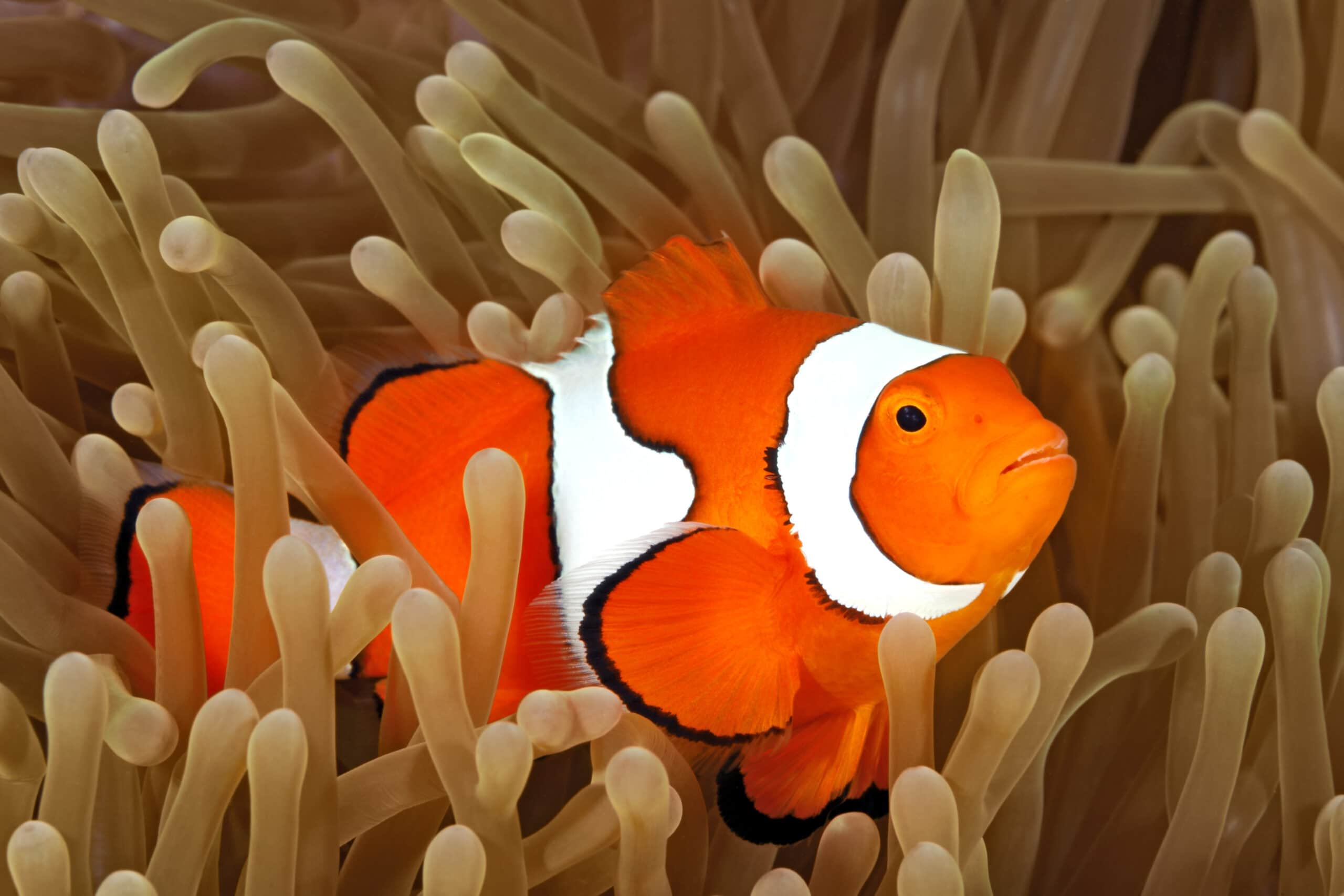
What Clownfish Is Best For My Aquarium? Beginners Education AlgaeBarn
The tube method The way to effectively carry out this strategy of introducing your Clownfish is to acclimate the anemone to the reef tank first. Once the anemone is content and latched onto a rock, then you can start to acclimate your Clownfish.

Ocellaris clownfish nestled in a magnificent sea anemone (Heteractis
Ecology: Clownfish live within the tentacles of sea anemones. About one-third of the species live with a host-specific species of anemone (Allen et al. 2003). They are highly territorial, forming a symbiotic relationship with anemones. A protective layer of mucus on the fish prevents it from being stung while it takes refuge amongst the.
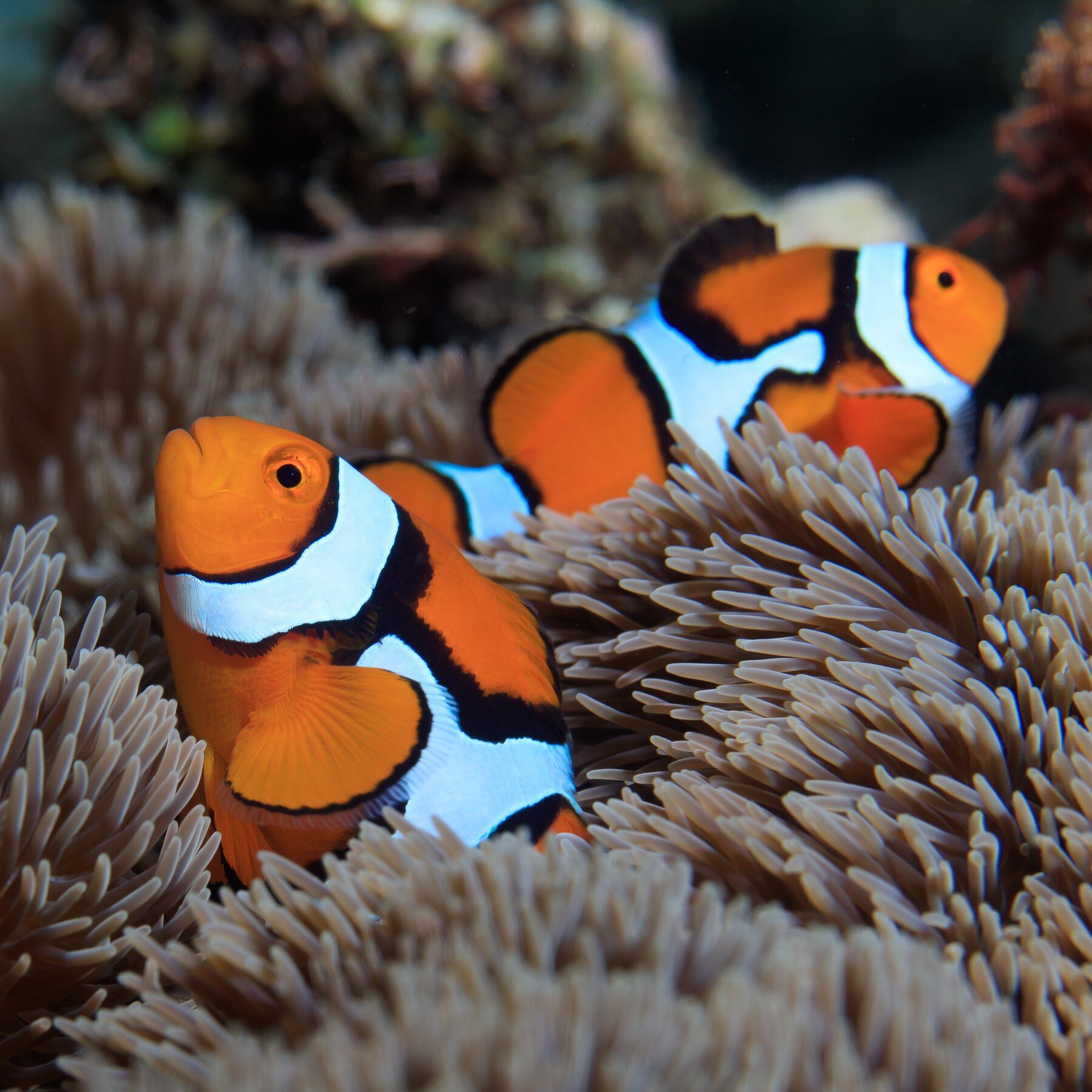
Distinctive white stripes in clownfish form at different rates
In This Article. Made famous by the movie Finding Nemo, the ocellaris clownfish is a very popular saltwater aquarium fish. They are good for beginners, being hardy fish and a good fit for smaller aquariums, while providing a vivid orange splash of color. They are "reef-safe," leaving corals alone. Through captive breeding programs, many color.